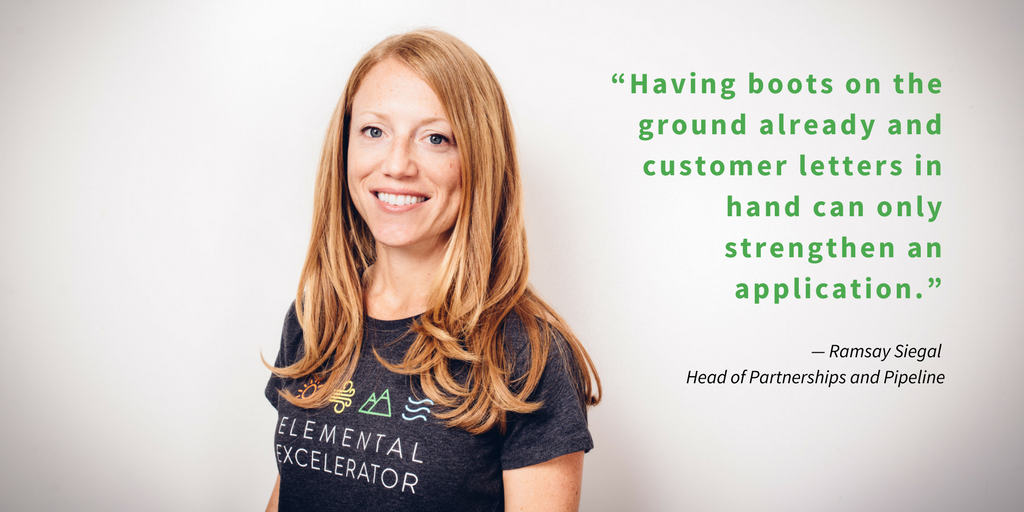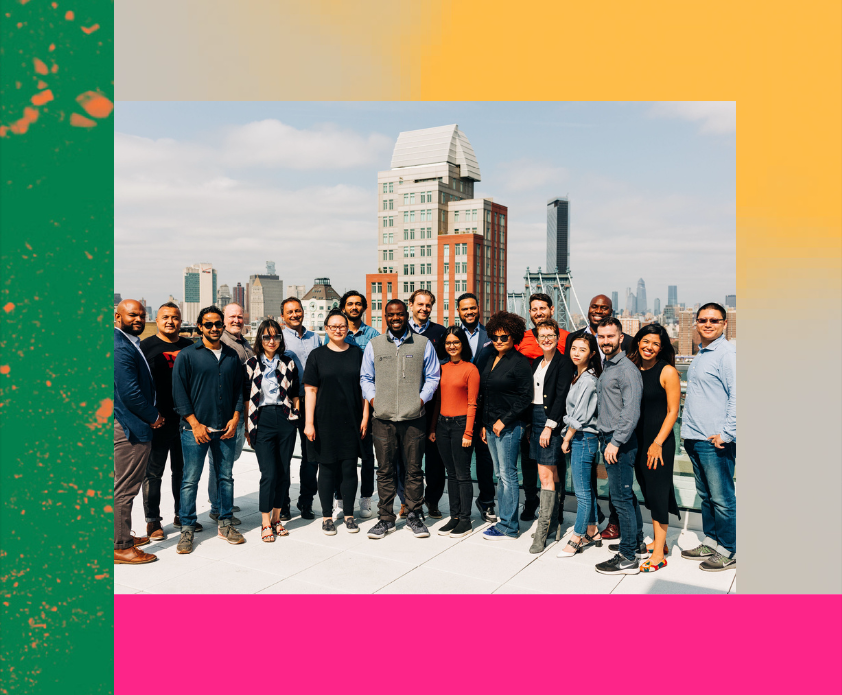
How our portfolio companies’ applications captured our attention, shared how they would fit into the EEx community, and charted their roadmaps to changing people’s lives.
Pretty much every accelerator program puts together a “How to make your application stand out” guide. We thought of doing that, too, but there are already so many great guidelines, including those from our friends at Y Combinator, Techstars, and 500 Startups. Honestly, we like to see most of the same things on applications that other accelerators do, like clear and concise descriptions of what your company does, evidence that you’ve researched our program, and proof that your team is both qualified and passionate.
We’re a bit different in two ways: 1) we’re a growth-stage accelerator designed to bring commercial opportunities to startups and 2) as a nonprofit, we focus primarily on impact. So, while a successful application should show us why your company is special, more crucially, we’re eager to understand how your company can transform markets, positively change communities, and dramatically increase in scale as a direct result of participating in our program. This is particularly true for applicants in our Demonstration Track.
We operate with the fundamental belief that innovation can improve the way we inhabit the world. And we’d love to believe in your company (and, for Demonstration Track applicants, your project).
Here, Ramsay Siegal, Elemental Excelerator’s Head of Partnerships and Pipeline, and Dana Cotter, Portfolio Lead, share some insights on how a few of our previous applicants helped us believe.
1. Start with the Big Idea. Our goal is to fund projects that are transformational for your company.
“Solar Analytics has an energy monitoring solution for solar home owners that has been successful, but the bigger idea for the company is a platform that enables energy sharing between solar PV owners and non-owners. To validate that vision and realize the full business model, they knew they needed to land a utility customer who would also benefit from the project. Starting with their big shared-solar idea and then working backwards, they figured out how to make it a win/win for both Solar Analytics as an organization and for the energy retailer by helping them lock in customers and reduce churn.” — Dana

2. Show additionality. This can be a bit like threading a needle. Ideally, we’re not funding something that you’re already good at, nor a project that’s going to be a tangent for your company.
“Sighten is already a powerhouse in the solar software world, but the company identified the need to add efficiency and storage at a residential level to their product. They saw where the market was headed, and wanted to get a jump on it. So while their core technology — software that helps solar PV installers, sales companies, and financiers — remains unchanged, adding those new modules would allow their tool to be more flexible. They looked five years down the line and saw how the market would evolve, and we’re helping them accelerate that timeline.” — Dana
3. Display an understanding of the market in which you want to design your demo project. Who do you need to get on board for your project to be a success and what role do they play relative to others in the market?
“A lot of our projects involve one or two customers. But Kevala, who wanted to build a data visualization tool to help renewable energy policy move forward here in Hawaii, had a project that would require heavy engagement with many different organizations. They told us all about the types of stakeholders they would need to engage, from local solar installers and energy efficiency companies to policymakers and regulators, and even the number of stakeholder meetings they would need to hold. That showed us they had a really in-depth understanding of all the people they needed, and who we would eventually help bring to the table.” — Dana
4. Be in motion. In addition to knowing your key stakeholders, you’ll eventually need them to commit to bring a project partner. So why not get a head start? Laying the groundwork for your project helps us see you have more than just an idea.
Jenna Rodriguez of Ceres Imaging says that she knew her company would need to interact with local farmers, pilots, and even the educational community in Hawaii for the proposed project to be a success. And knowing that Ceres would need those constituencies on board, she had already started conversations with them. In fact, Jenna happened to be on the island of Kauai during the application process and used the opportunity to meet with potential partners and growers in person, a key step in garnering support and letters of interest for their application and proposed project.
“Even though these weren’t official letters of commitment, they gave us additional customers to validate the project with during our due diligence process. Having boots on the ground already and customer letters in hand can only strengthen an application.” — Ramsay

5. Articulate any additional ways your project would benefit the local community and economy. Bonus points for this one! Our portfolio companies have already created more than 50 full-time jobs and 10 internships in Hawaii in 2018. We’re proud of that, but see it as just the beginning.
Tad Glauthier, Stem‘s VP of Hawaii Operations, describes how the California-based company used the application to highlight the project’s local focus. He says Stem wanted to make sure that at least half of the project’s customers were Hawaii-owned businesses and local establishments, like the Honolulu Museum of Art, that people respected and trusted. He says that Stem also made a point to use local electricians and installers. “We didn’t fly in any rocket scientists from California to do our work,” he says. “That was a part of our application, saying we’re going to create some jobs here, we’re going to put the local electrical firms to work.”
“Our goal is to transform companies and communities. We see a huge opportunity to engage local talent and the trades through our Demonstration Track projects. Not only did Stem’s application lay out the clear local benefit to small businesses, but also its ability to tap in and train the local workforce that resulted in job creation and skilled labor acquisition.” — Dana
These ideas are meant to be helpful — not gospel!
These are just a few of the ways our applicants kicked off their journey as an EEx portfolio company. Yours may look similar — or not! And while it takes a lot of thought to craft an application, the payoff for your hard work ranges from connecting with partners across the globe to learning from other entrepreneurs blazing trails alongside yours.
Our application process is designed to be the beginning of a conversation. We can’t wait to hear what you have to say.




